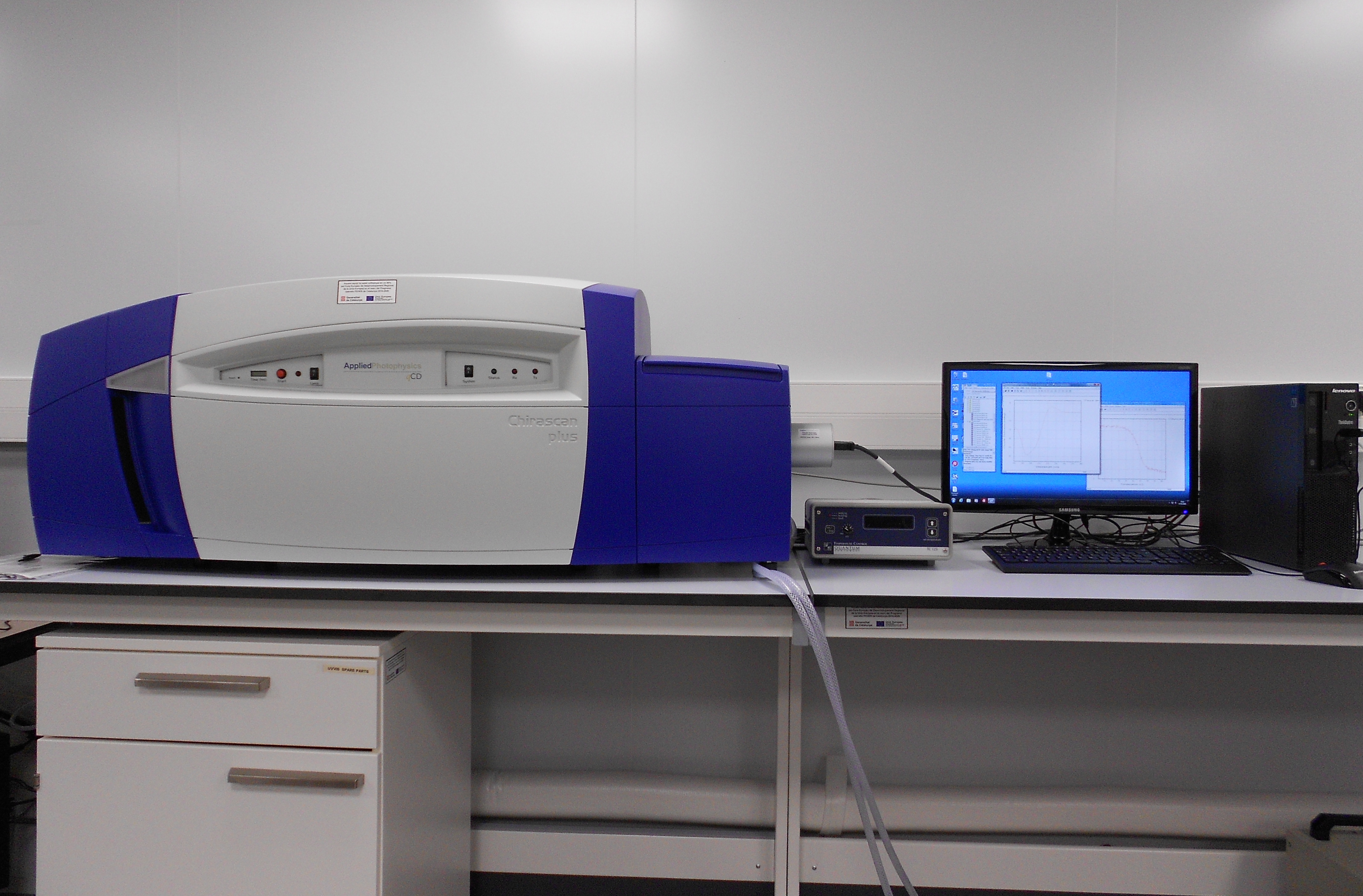Circular Dichroism Spectroscopy
Description
Circular dichroism (CD) is the difference in absorbance between left-handed circularly polarised light (L-CPL) and right-handed circularly polarised light (R-CPL) and occurs when a molecule contains one or more chiral chromophores (light-absorbing groups). Circular dichroism spectroscopy is a spectroscopic technique where the CD of molecules is measured over a range of wavelengths. It is used extensively to study chiral molecules of all types and sizes, but it is in the study of large biological molecules where it finds its most important applications. A primary use is in analysing the secondary structure or conformation of macromolecules, particularly proteins, circular dichroism can be used to observe how secondary structure changes with environmental conditions or on interaction with other molecules. Structural, kinetic and thermodynamic information about macromolecules can be derived from circular dichroism spectroscopy. Our equipment is the Chirascan Plus spectrophotometer.
Key features
- Temperature controlled cuvette holder
- Global 3-UNIQUE analysis software
- CS/SP2 rectangular cell holder for mounting cell of 0.01mm and 0.5mm
Contact
In order to book the equipment, please contact Xènia García de Andrés (tecnics.multiescala@upc.edu)
Share: